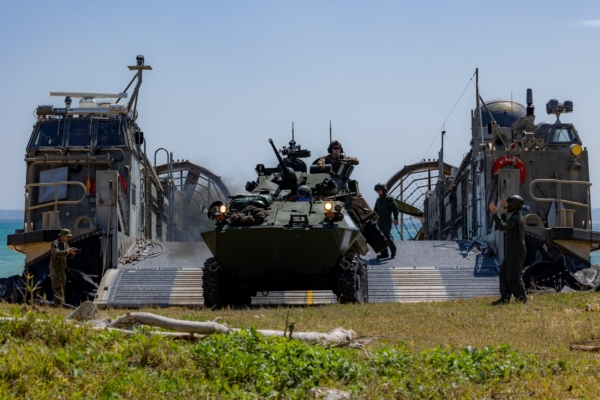Washington DC, September 6, 2024 – An US senior defense official has revealed that Washington has expressed to Japan its desire to deploy the “Typhon” mid-range missile system as part of military exercises, significantly enhancing the deterrent against the Chinese Communist Party (CCP).
On Wednesday, September 4th, US Secretary of the Army Christine Wormuth mentioned during a discussion at Defense News that during her visit to Tokyo in early August, she raised the issue and met with Japanese Defense Minister Toshimitsu Motegi.
Wormuth stated that the US looks forward to seeing the Multi-Domain Task Force (MDTF) conducting operations in Japan through exercises and other activities.
The MDTF is a new operational unit of the US military, specializing in network, electronic warfare, and long-range firepower. In the event of a conflict with the CCP or Russia, the MDTF could engage with opponents in various domains including airspace, space, maritime, cyberspace, and land.
Equipped with the Mid-Range Capability (MRC) land-based missile launch system, known as the “Typhon Weapons System,” the MDTF can launch missiles such as the over 1,000-mile-range “Tomahawk” missile and the 290-mile-range “Standard Missile 6.”
“We have expressed our willingness to the Japanese Self-Defense Forces regarding this matter,” Wormuth said.
She also mentioned the possibility of future equipment and troop deployments to Japan’s southwestern islands. The proximity of these islands to Taiwan is considered one of the potential hotspots for conflict between the US and the CCP.
Wormuth emphasized that any deployment would proceed at a pace acceptable to Japan. Prior to this, the “Typhon” system had never been sent to Japan.
“We look forward to continuing discussions with Japan on what options are suitable,” Wormuth added.
When discussing regional cooperation, Wormuth reiterated the alliance between the US, Japan, and South Korea, which she believes has greatly benefited the US. She also noted that the provocative actions of the CCP in the region have incentivized cooperation between Japan and South Korea.
As part of the “Shield 24” exercise in April of this year, the US Army’s 1st MDTF in Washington State dispatched the “Typhon” missile launcher to the Philippines and deployed it to Northern Luzon.
This marked the first time the US had deployed land-based missiles to a foreign country since withdrawing from the Intermediate-Range Nuclear Forces Treaty in August 2019.
The INF Treaty, signed in 1987, had long prohibited the US from possessing, producing, or flight-testing land-based ballistic and cruise missiles with a range of 500 to 5,500 kilometers.
However, China never joined the INF Treaty and has rapidly expanded its missile arsenal in recent years. This prompted the Trump administration to withdraw from the treaty and initiate the rebuilding of the US arsenal.
In April of this year, the deployment of the “Typhon” missile system in the Philippines lasted several months and with an estimated range of 1,000 miles, a missile launch from Northern Luzon could reach Shanghai, China, causing concerns in Beijing. The Philippines had stated that the “Typhon” system would be withdrawn in September.
During Wednesday’s event, Wormuth mentioned that the months-long deployment would set a precedent for future actions. She stated that Washington would continue to “dialogue” with regional allies such as the Philippines to seek opportunities for deploying the “Typhon” system in the Indo-Pacific region.
She expressed the US Army’s goal of having “six months or more” of credible combat capabilities annually in the Indo-Pacific region west of the International Date Line.
Regarding the “Typhon” system, Wormuth remarked, “It is an impressive capability.”
“Demonstrating this type of combat capability can enhance deterrence in the region,” she said. “I believe it has caught the attention of China (CCP).”
In early August, a delegation from the Japan Ground Self-Defense Force visited Joint Base Lewis-McChord (JBLM) in Washington State, which is seen as laying the groundwork for a similar deployment in Japan.
According to the latest manpower statistics from the Pentagon, nearly 55,000 US troops are stationed in Japan, more than any other location outside the US territory.

